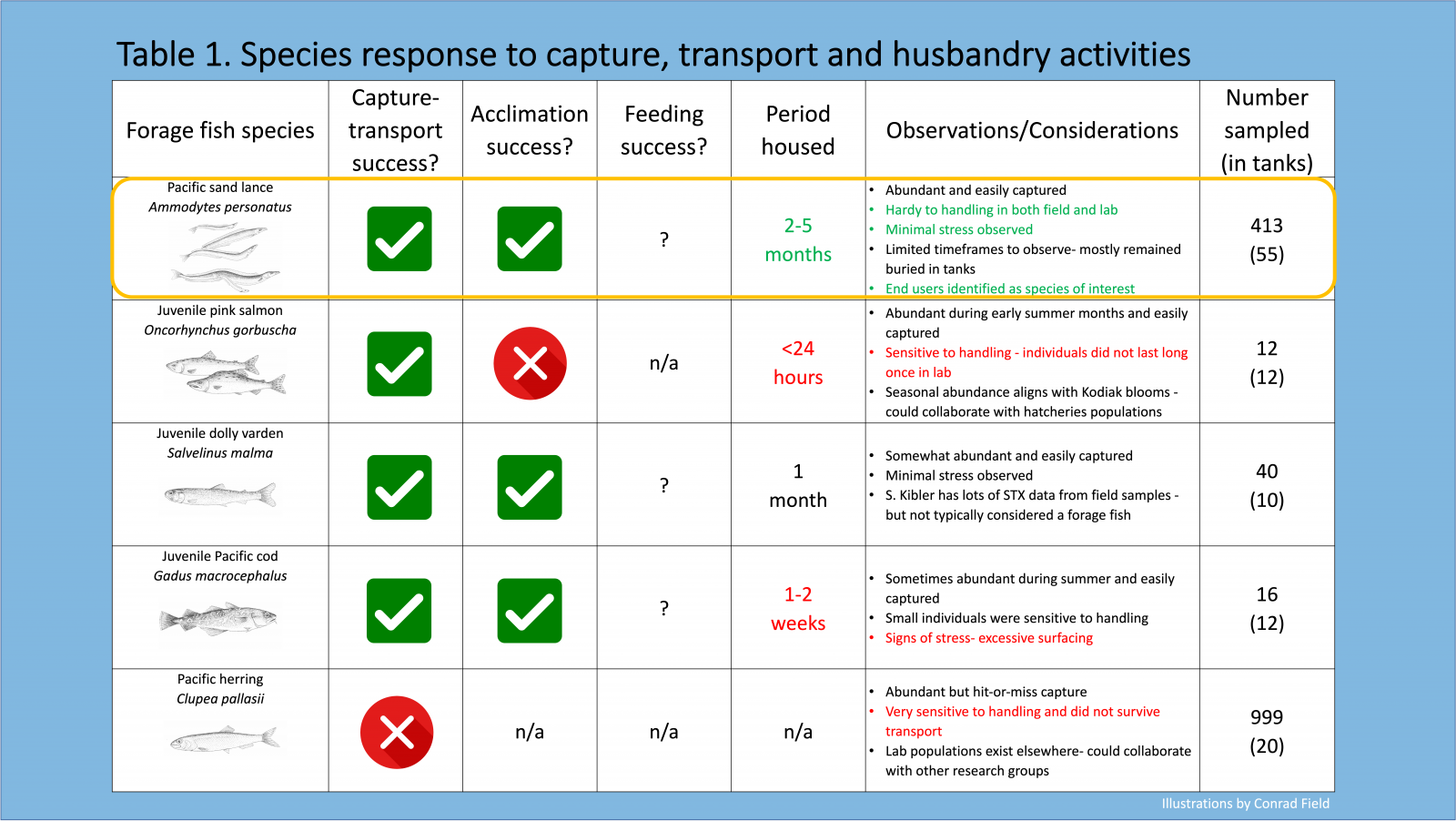About the project
Through a 2020 catalyst project, staff from the Kachemak Bay Reserve expanded research collaborations and completed proof of concept activities to catalyze future research on the mechanisms of paralytic shellfish toxin transfer from forage fish to upper trophic populations– an increasing concern after statewide seabird die-offs and marine mammal strandings.
About this resource
A major question driving the activities in this project was “Which Alaskan forage fish species should be targeted for future research on shellfish toxin transfer?” This question was resolved after initial fish collection trials and consultations with users. The Pacific sand lance (Ammodytes personatus) was identified as the appropriate target species due to their ubiquity and abundance in the Alaskan marine ecosystem, their importance to other research groups and users, and their relative ease of capture and husbandry. The table presented here summarizes the key findings related to the capture, transport and husbandry practices tested in the project.
Guo C, Walker CM. Assessing research efforts and emerging issues concerning forage fish exposure to Paralytic Shellfish Toxins in Alaska. Poster presented at: National Estuarine Research Reserve System National Meeting. 2022 Oct 24-27. Seattle, WA.
